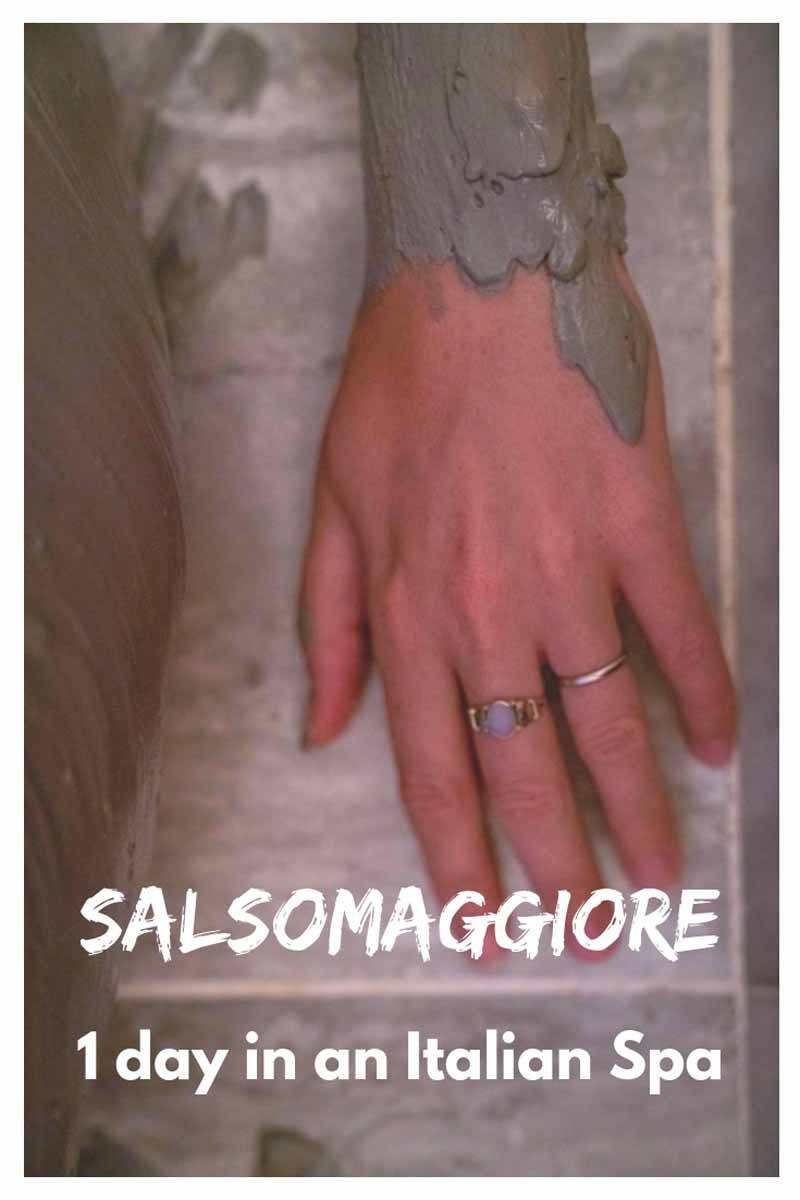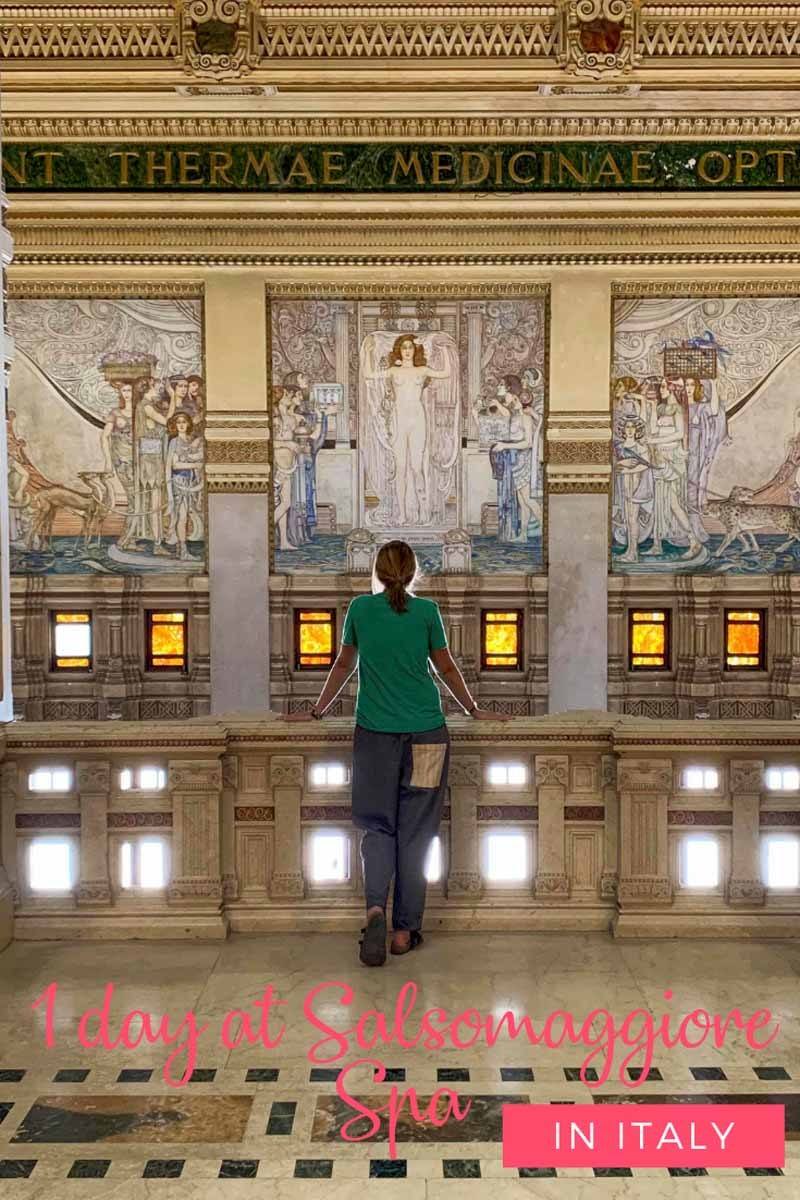Are you planning to hike the Via Francigena in Emilia Romagna? We highly recommend including a rest day in your hiking schedule – here’s how we spent a great day in Salsomaggiore Terme, relaxing and learning about local food!
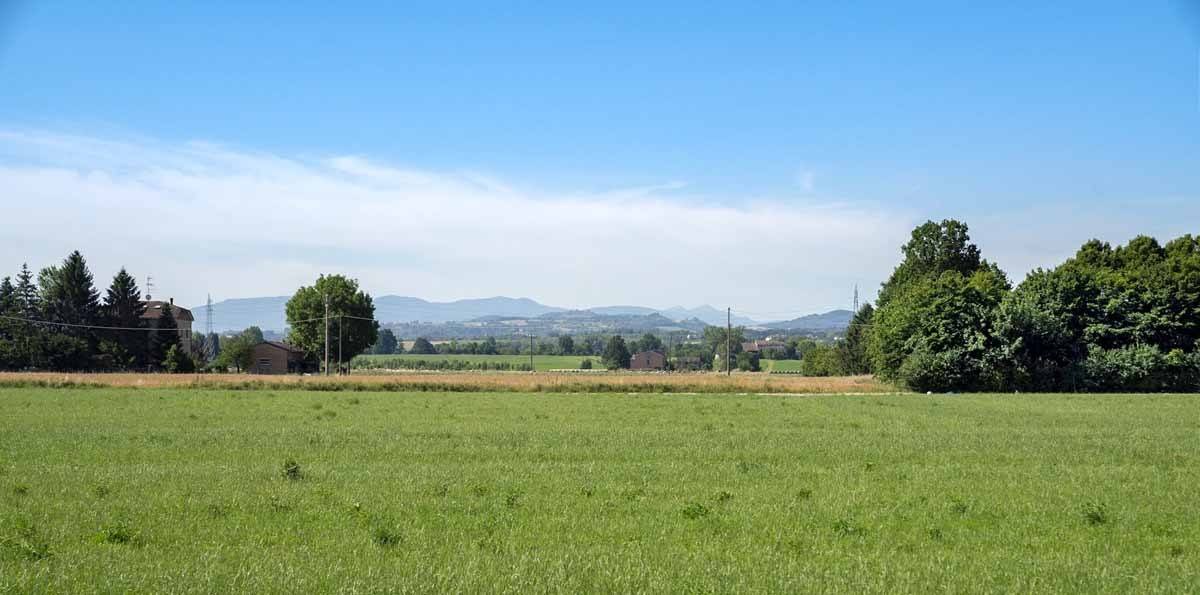
In our last post about visiting Piacenza, we said that one of the reasons why we love long distance hiking is that it gives us the chance to visit small towns we wouldn’t normally get to. For example, last year, after hiking the Via degli Abati, we wrote an article about our favourite small towns in Emilia Romagna – most of which we’ve discovered thanks to hiking.
The only issue with visiting places while hiking is that you’re often extremely tired, or have limited time – or both.
Imagine that – you’ve had an early start and spent several hours on a trail, and then you reach your overnight stop, a charming little town famous for its museum/local food/cathedral/whatever. What to do? Should you spend those precious few hours before it’s time to sleep exploring, or resting? Or doing a bit of both?
We have the ideal solution – include a few ‘rest days’ throughout your hike. Spend two nights rather than one in the towns that appeal to you the most, so that you can rest your legs, and enjoy sights and activities without having to rush around.
We did that during our hike along the GR1 in Catalunya, and then again when we hiked the Via Francigena. We opted to spend an extra day in Fidenza so that we could visit Salsomaggiore Terme, have a spa treatment, and visit something that had been in my list of things to do FOREVER – a Parmigiano Reggiano cheese factory!
Here’s the chronicle of our day in and around Salsomaggiore Terme, before continuing with our hike!
Morning – Visiting a Parmigiano Reggiano Factory
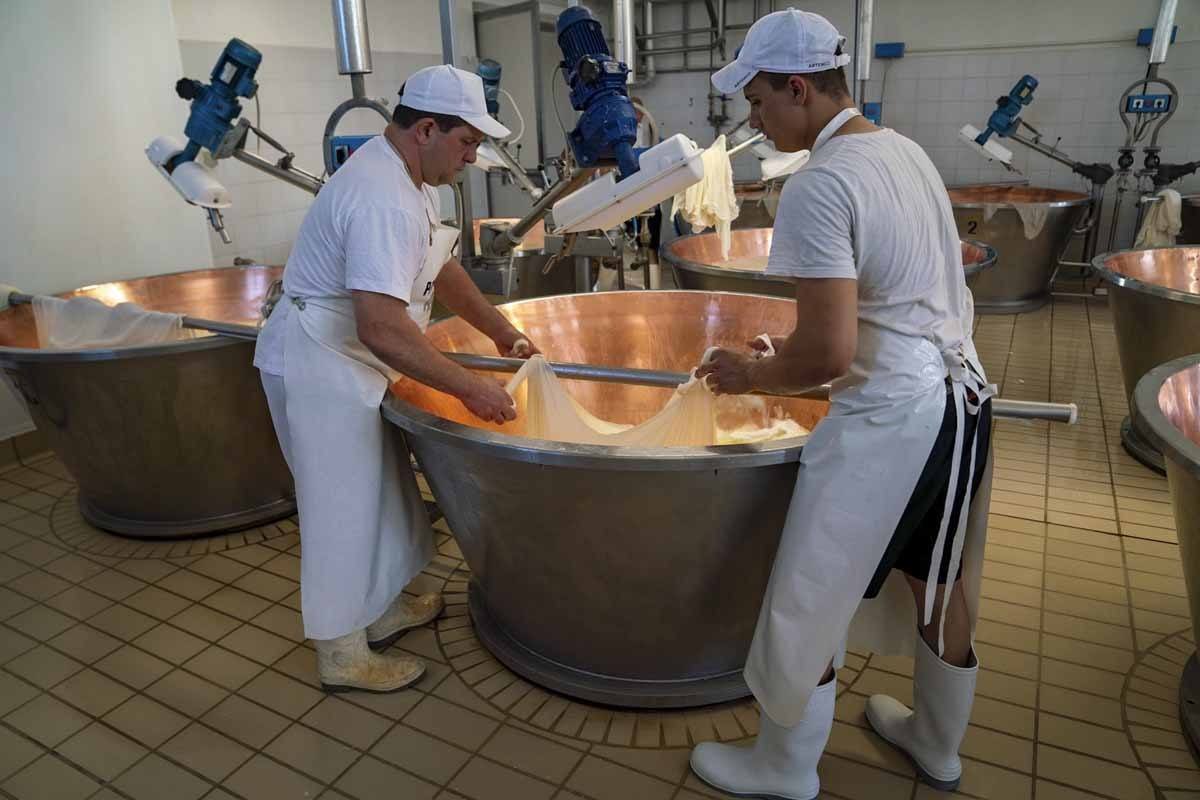
The good folks of the Via Francigena Association are well aware that by the time hikers hit Fidenza, they’ll be in need of two things – rest, and good food. As a result, they set up the Sosta & Gusta program, translating as ‘stop and taste’.
There are a number of food shops, dairy farms, markets, and restaurants participating in the program, offering discounts and tastings to Via Francigena pilgrims. Dairy farms are all Parmigiano Reggiano producers, since Fidenza and Salsomaggiore are right at the heart of the production area.
We both love Parmigiano Reggiano, and had it pretty much with every single meal while in Emilia Romagna – dusted on pisarei and fasò while in Piacenza, mixed through tortellini in Bologna, and even for breakfast in Fiorenzuola. For this reason, we thought there was no better way to start our rest day then a visit to a Parmigiano Reggiano factory.
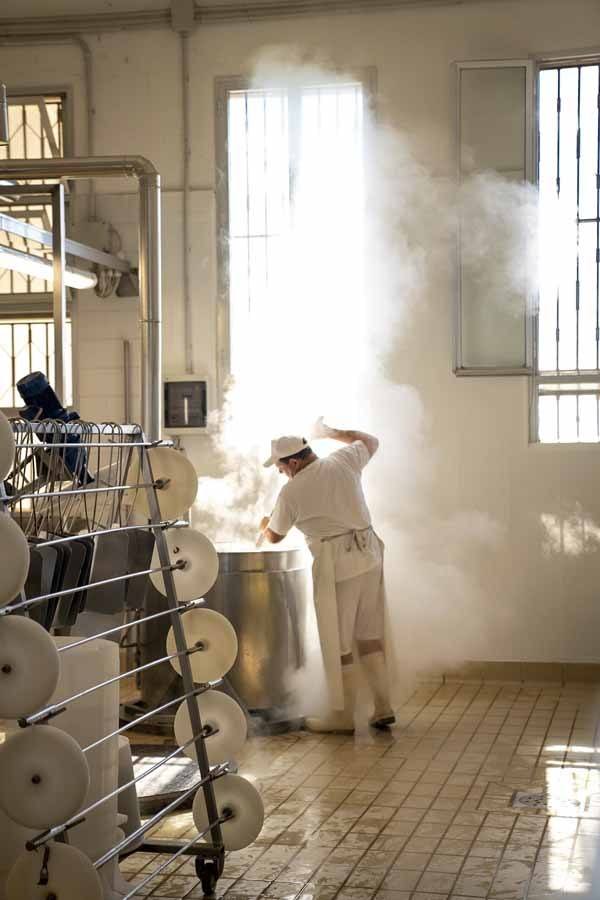
We woke up bright and early and made our way to Caseificio Coduro, just outside Fidenza. Guided tours usually start around 8 AM, when fresh milk is delivered, and take visitors through all stages the production cycle – showing the transformation from milk to cheese.
We started in a room full of copper vats, where fermented whey and rennet were added to milk, turning it into curd. After stirring and cooking, the curd becomes a solid cheese mass that sinks to the bottom of the cauldron – this, after being salted for a month, and matured for a minimum of 24 months, will become Parmigiano Reggiano.
Our guide took us to the salting room, where dozens of Parmigiano Reggiano wheels floated in huge brine tanks, and finally in the maturation room aka ‘cheese cathedral’, where row upon row of wooden shelves were stacked from top to bottom with cheeses at various stages of maturation.
At the end of the visit, we got to try some of this wonderful cheese. I had eaten it at leat a thousand times before, but never paid attention to its texture, and the way the cheese crumbles into tiny crystals as you bite through it.
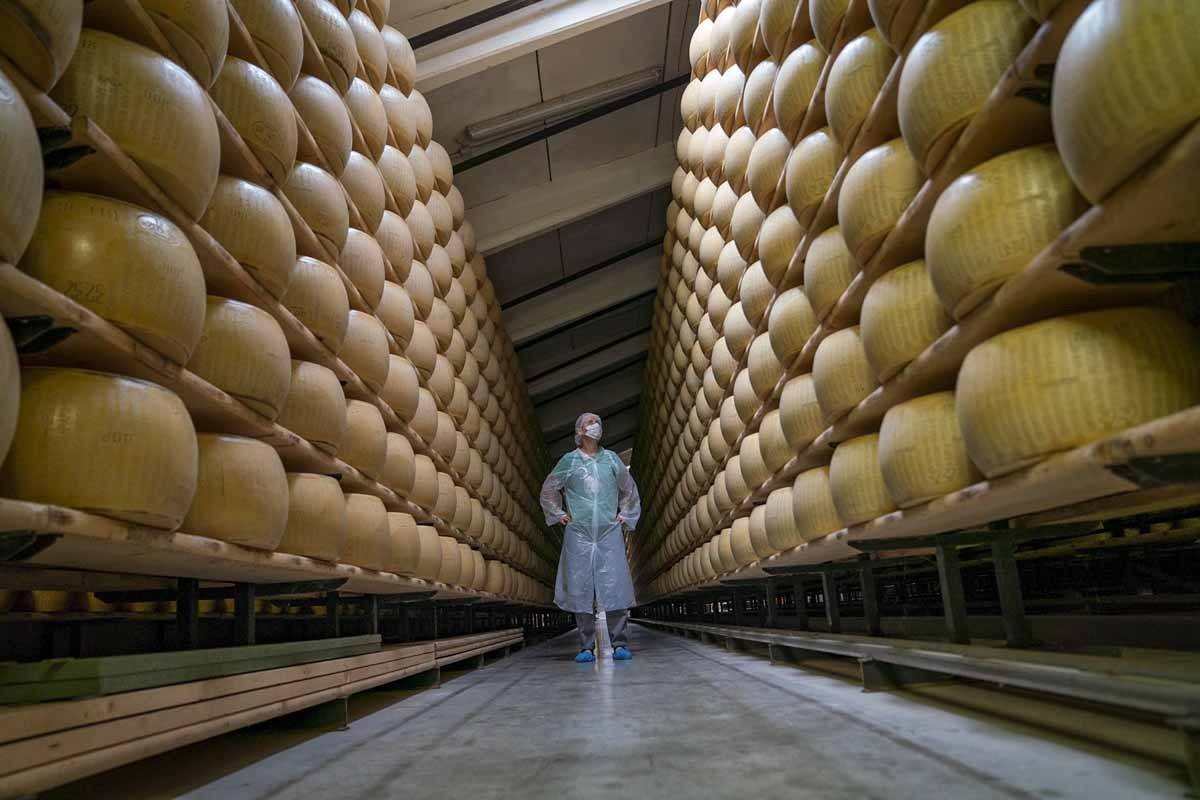
We also learned two curious facts. First, that Parmigiano Reggiano is about as old as the Via Francigena – the first reports of its existence date back as far as the 10th century AD, around the same time as Sigeric’s trailblazing journey in 990.
Second, that Parmigiano Reggiano is possibly the healthiest cheese ever – it’s very nutritious, being high in proteins and low in fats, and it’s naturally lactose-free. So, eat away – there’s no reason to feel guilty!
Late Morning – Art Nouveau in Salsomaggiore Terme
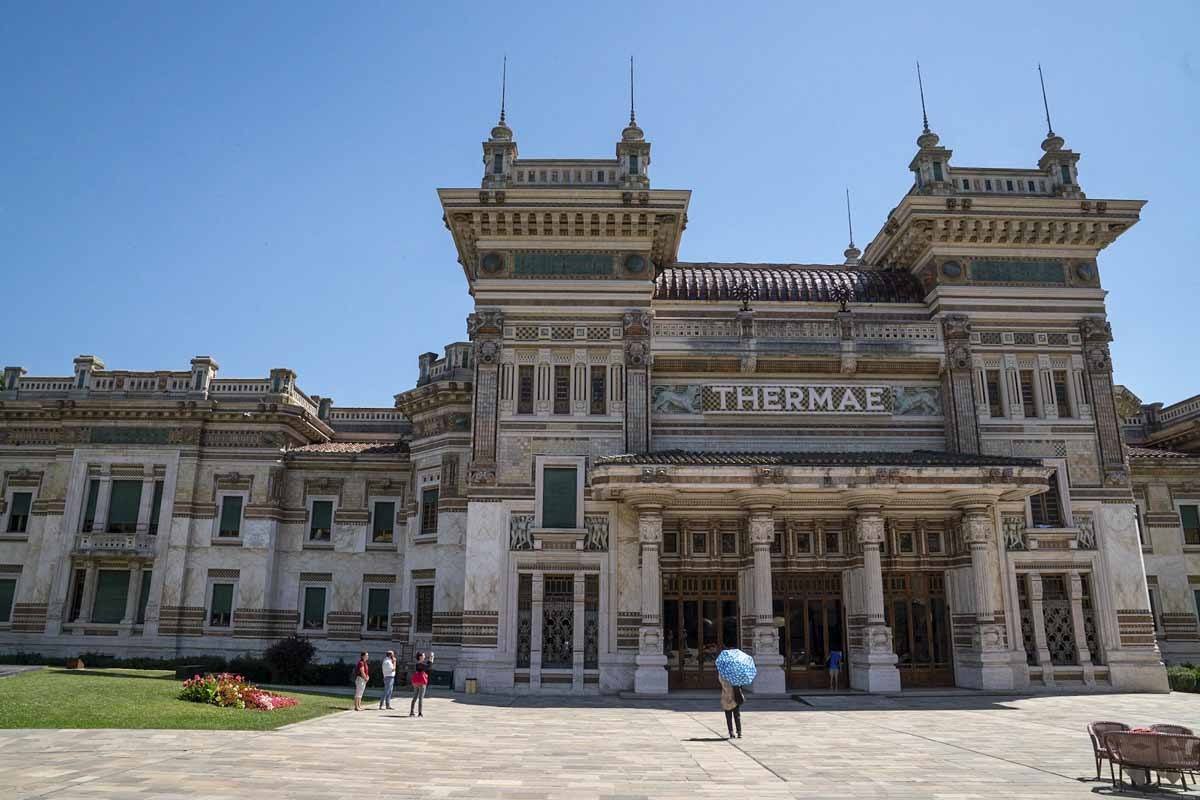
The Fidenza/Salsomaggiore area marks the spot where the Po Valley meets the Apennines foothills – after days hiking through seemingly endless plains, we were very happy to see some hills.
Salsomaggiore Terme is best known for its thermal waters, known for their beneficial effects ever since Roman times. The water is salsobromoiodic, with a high concentration of salt (four times the amount found in seawater!) plus iodine and bromine.
In the late 19th century, a local doctor discovered that Salsomaggiore’s thermal waters have countless health benefits – they can be used to treat infertility, skin problems, poor circulation and more. Visitors started travelling to the city for its miraculous waters, and the hospitality industry developed gradually.
Yet, the boom of ‘thermal tourism’ took place in the early 20th century, when the Italian government commissioned the construction of thermal buildings in Liberty style, the Italian version of Art Nouveau.
The Italian government started subsidising thermal breaks for citizens in need – at the time, thermal baths were perceived as medical treatment, in a manner not dissimilar to Soviet sanatoriums.
In Salsomaggiore Terme you can visit what is probably the most beautiful thermal building in the whole world, Terme Berzieri. It dominates the main square, standing in the place usually occupied by cathedrals, ‘looking as if it was dropped by aliens from outer space’, in the words of our guide.
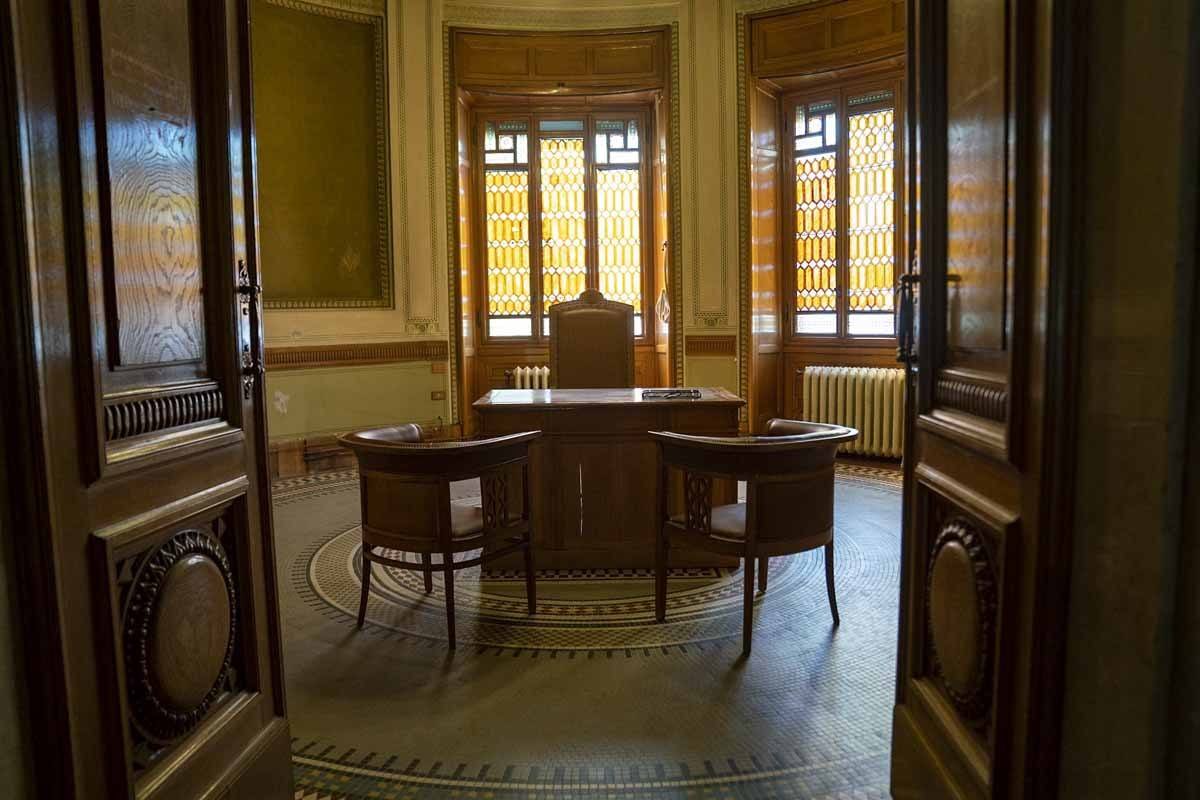
During our day in Salsomaggiore Terme we had the chance to visit Terme Berzieri. It is just as stunning inside as it is outside, all gleaming marbles and friezes. The interiors were decorated by Galileo Chini, one of the foremost Italian Liberty artists, in a that mixes classical and Oriental influences – Chini spent years in Thailand, working as an artist for the Siamese royal family.
The building looks like a true ‘cathedral’ dedicated to wellbeing. We walked up and down the monumental stairways, unsure of whether we should look down at the marble floors, or up towards the friezes and monumental balconies, imagining how amazed the first visitors must have felt, close to 100 years ago.
Sadly, Terme Berzieri were not open on the day we visited – we were able to access the building to see the beautiful Art Nouveau and Art Deco interiors, but we couldn’t have treatments or bathe in the pools. Opening times change frequently throughout the year, and the best way to find out is to check the official Terme Berzieri website.
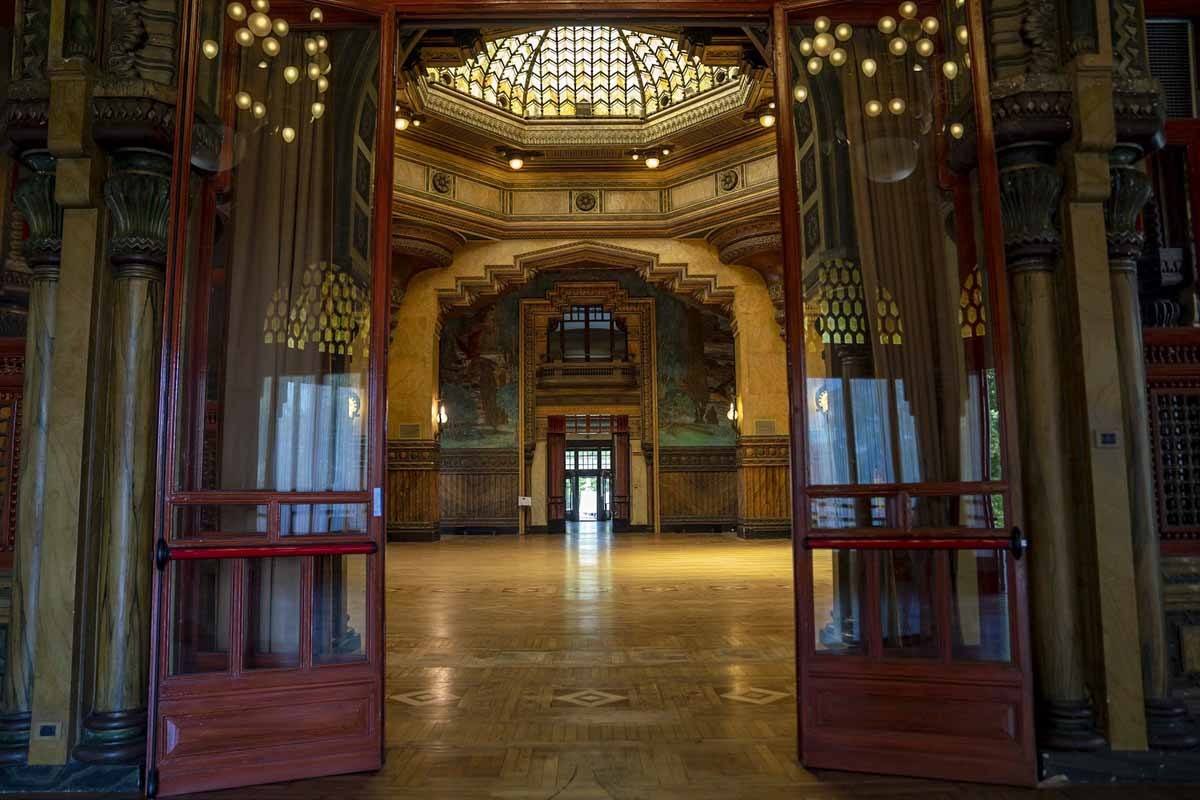
However, Terme Berzieri are not the only Liberty architectural marvel in Salsomaggiore Terme. Only a few hundred meters away there’s Palazzo dei Congressi, a former hotel turned into meeting rooms and conference centre.
It was also decorated by Galileo Chini in Liberty style with Far Eastern influences – the ‘Moresco’ room was used a setting for Bernardo Bertolucci’s movie ‘The Last Emperor’.
We also gained special access to visit the Palazzo dei Congressi, but it is my understanding that it is usually closed to the public. If you’re intending to visit Salsomaggiore Terme, try to time your visit with one of the guided tours taking place regularly in summer – you can get more info on the Visit Salsomaggiore website.
Afternoon – Treatments at Tabiano Terme
Since we couldn’t experience treatments in Salsomaggiore Terme itself, after lunch we made our way to Tabiano, a kind of ‘satellite town’ to larger Salsomaggiore, located higher up in the hills.
Tabiano is also known for its thermal waters for centuries, but despite the vicinity with Salsomaggiore, its waters come from a different source and are completely different in terms of mineral composition – it’s one of the most sulphuric waters in Europe, and as a result it is recommended for patients with ear, throat or breathing problems, including asthma sufferers.
For most of the 20th century, ‘thermal business’ in Tabiano was mainly made up of medical patients, and as a result the building where treatments take place is not quite as attractive as Terme Berzieri down in Salsomaggiore – it’s a modern 1960s affair, reminiscent of a hospital.

A few years ago, in line with the modern shift of thermal tourism from medical purposes to wellbeing, an entire wing of the thermal building was renovated and turned into a T-Spatium, a modern spa dedicated to holistic wellbeing.
T-Spatium is managed by Lumen, a naturopathy collective that offers treatments based on ancient Hippocratic medicine, based on the Pythagorean theory that Nature was made of four elements (water, earth, air and fire), and that illnesses and health issues are based on an abundance or scarcity of one or more elements in the body.
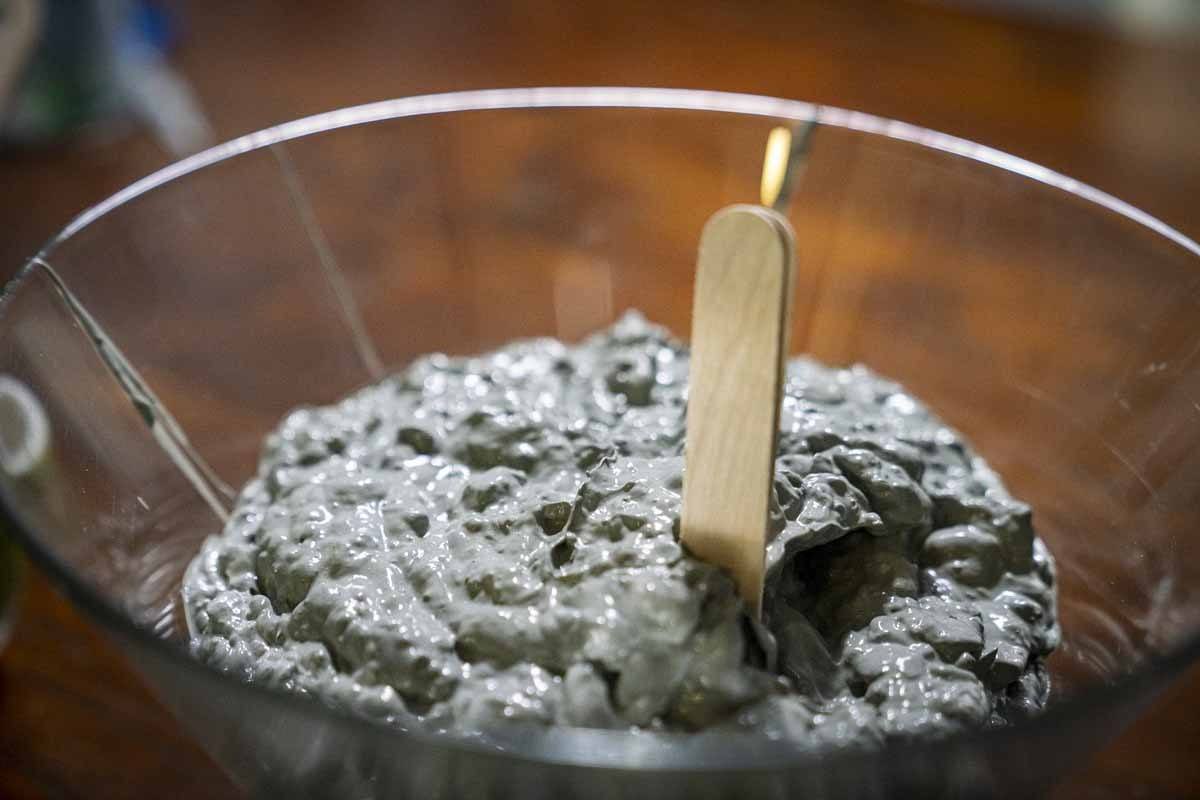
I was diagnosed with an excess of air and a lack of earth, which according to my therapist explained my perpetual inability to stay still. My treatment was a very pleasant 90 minute massage and mud wrap, followed by a soak in the sulphuric Tabiano waters.
Is it going to help me feel more ‘grounded’ in the future? Of that, I am not sure – but I can guarantee it was a great way to rest after three days hiking along the Via Francigena.
Evening – Dinner at Tabiano Castle
The hills surrounding Salsomaggiore and Tabiano are home to several castles, built by Marquis Pallavicino during medieval times, to protect his feud against outside invaders. Some of these castles are now in ruins, while others survive, and have been turned into hotels, restaurants or wedding venues.
After my treatment we headed to Tabiano Castle, a short drive from Tabiano Terme, overlooking a medieval village that has now been turned into a ‘relais de charme’.
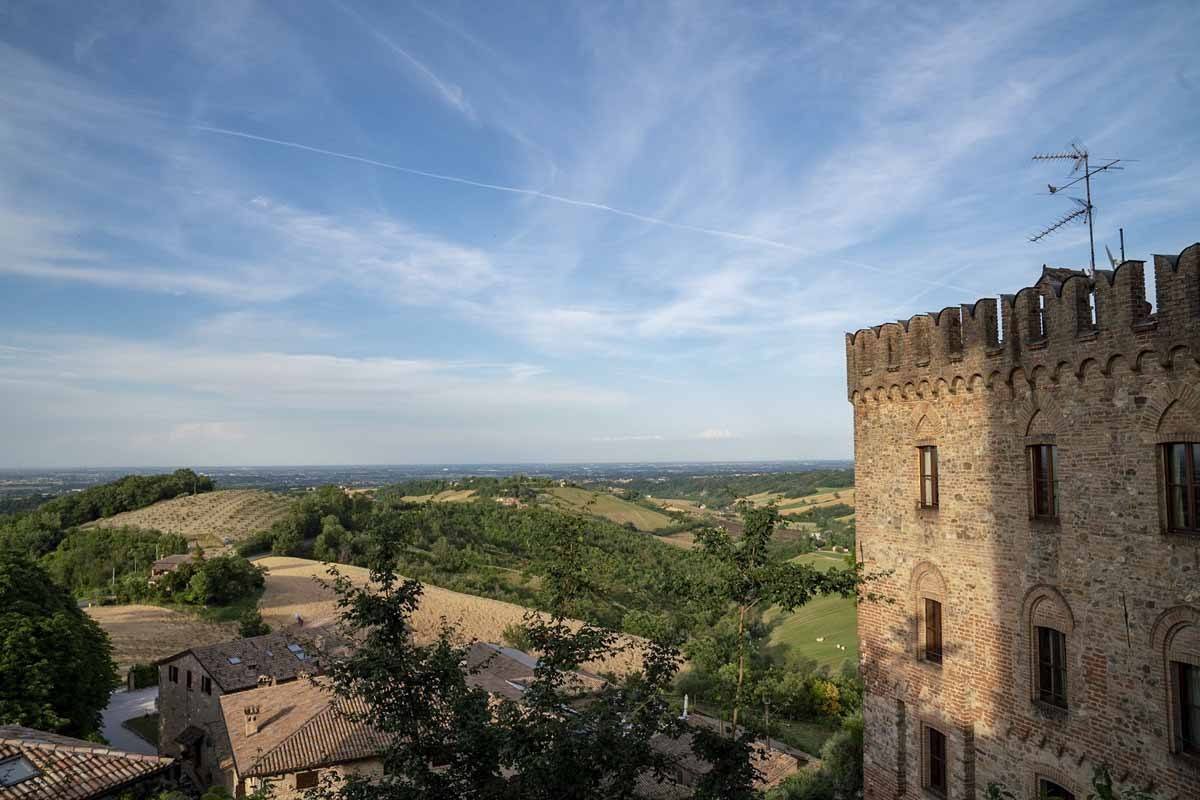
We were lucky to be able to visit the castle with the current owner, Giacomo, who still inhabits the castle. Together with his cute dog Alpha, he led us through the rooms, all individually decorated, and with precious details like crystal chandeliers and stucco ceilings.
Unlike all castles we visited in the past, Tabiano was still inhabited and not solely set up as a museum. It looked, and felt like a home. Plush armchairs and couches were not roped off – they had been sat on, and the copper pots and plates in the kitchen were still regularly used.
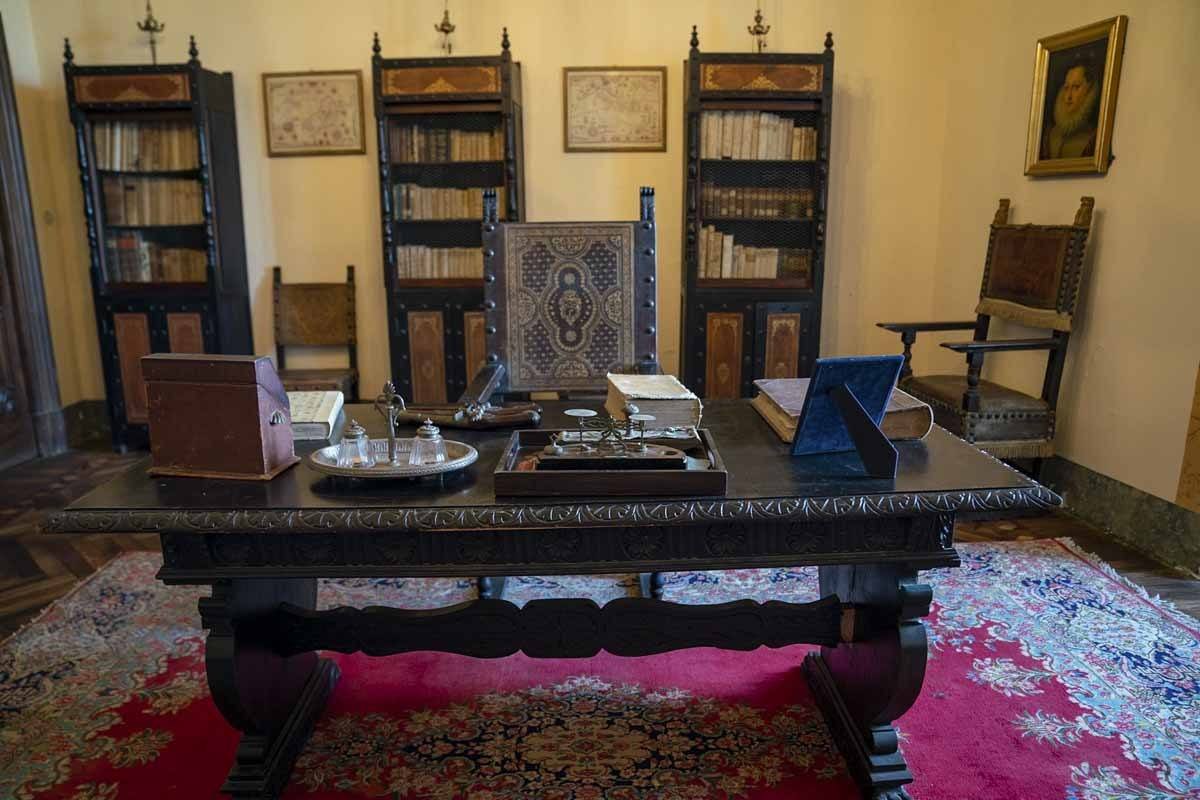
We ended our perfect day in Salsomaggiore and Tabiano Terme with dinner at L’Antico Caseificio, the restaurant obtained in the former castle dairy.
The menu was all dedicated to local specialties, and included herbs and ingredients grown on site. We feasted on the very best Emilia Romagna food – paper-thin culatello on crusty bread, ravioli di erbetta drowned in melted butter, and last but not least, chunks of Parmigiano Reggiano.
We savoured the cheese one morsel after the other, feeling its grainy, ‘crystal-y’ consistency, and remember the process we had witnessed that very same morning. Meanwhile, we clinked our glasses filled with sparkling Gutturnio wine as the sun set behind us, and the sky slowly turned purple.
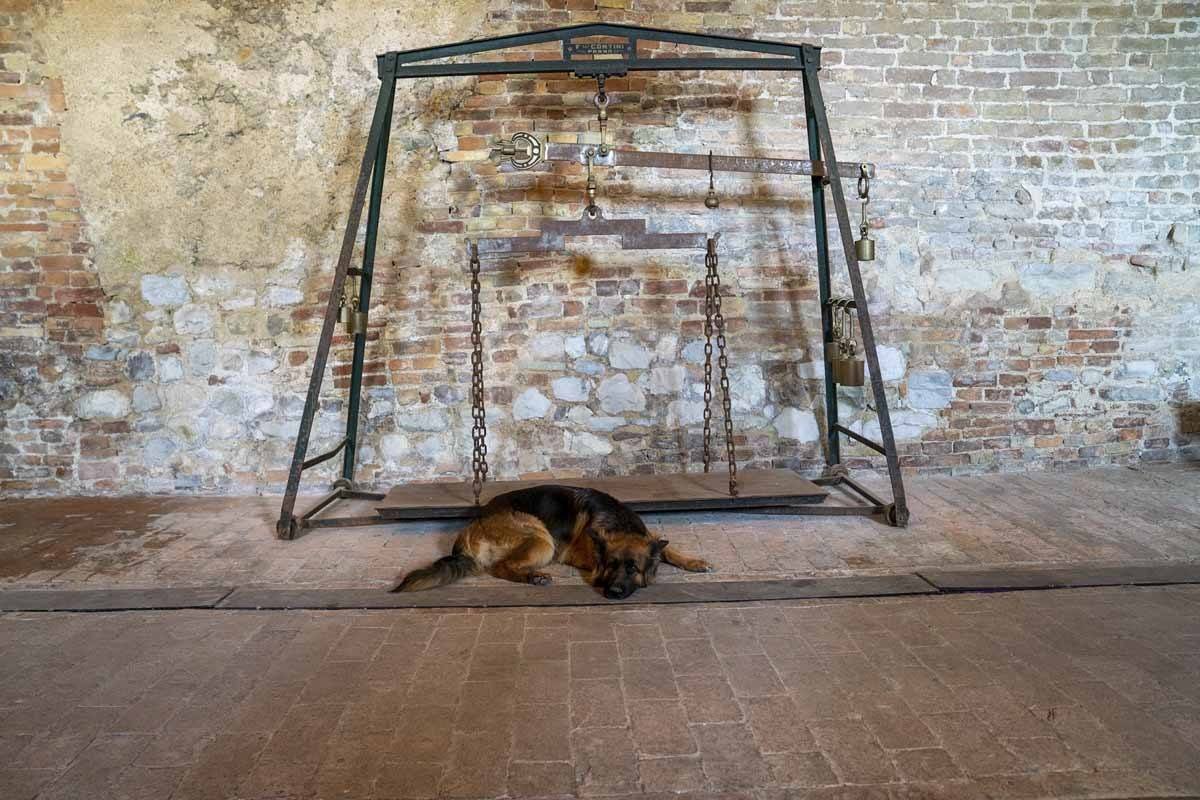
It was one of those days that should never end. From cheese to architectural marvels and thermal treatments, ending with dinner in a medieval castle. From the following day, we would be back to normal hiking life – and we would think back to our perfect rest day in Salsomaggiore Terme with a touch of nostalgia.
Our trip was sponsored by Turismo Emilia Romagna. We would like to thank all the people in Salsomaggiore who showed us around, the lovely folks at T-Spatium for the treatment, plus Cosetta and Giacomo for the Tabiano Castle visit.
Pin it for later?
